2019-2011
2019
Special Issue-Topological photonics and beyond: novel concepts and recent advances–will meet the audience soon
Special Issue on the 25th Anniversary of City University of Hong Kong
Special Issue on the 100th Anniversary of Nankai University
Special Issue on the 100th Anniversary of Harbin Institute of Technology
2018
2017
Call for Applications: Light Conference 2018: ‘Rising Stars of Light’ Award
Editorial Overview: Preface to the special issue on “Twisted Light with Orbital Angular Momentum”
Special Topic: Quantum meta-nanostructures: from the fundamentals to emerging applications
Article in Light: Science & Applications highlighted by Nature Photonics
Special Issue: Twisted Light with Orbital Angular Momentum
2015
LSA editor, Professor Chunlei Guo leads laser processing research at the new AIM Photonics
Recent Article in LSA Highlighted by Media
2014
Author of Light: Science & Applications won the Nobel Prize in Physics 2014
Light Conference: ICOME 2014 Explores Latest Research Progress
Light: Science & Applications Editorial Board Meeting in Changchun
Light: Science & Applications ranks fourth in optics with first impact factor
2013
Web Focus: advanced photonic integrated circuits is now live
LSA Published Paper highlighted on the NFC Website
2012
Prof. John Love accepted the invitation to be the topical editor of Light: Science & Applications
LSA Editorial Meeting Held Successfully at CIOMP
2011
--------------------------------------------------------------------------------------------------
Special Issue-Topological photonics and beyond: novel concepts and recent advances-will meet the audience soon
Release Date: 18 November 2019
In the past decade, research on topological photonics has grown exponentially. Tremendous progress has been made in implementing topological phases of light using different material platforms such as metamaterials, photonic crystals, waveguide arrays and coupled cavities. Exemplary successes include demonstrations of protected edge states and corner states and the discovery of non-Hermitian topological phases. During the summer of 2019, two international workshops on related topics were held in Tianjin, China and Daejeon, Korea, where pioneers in the topological photonics field brainstormed together and gave birth to this special issue - Topological photonics and beyond: novel concepts and recent advances.
This Special Issue is to report the new findings in emerging areas of topological photonics and beyond, including but not limited to innovative approaches for realizing topological phases and robust edge states, potential applications in nonlinear, integrated, or quantum photonics, and new perspectives on systems such as surface plasmons, excitons, exciton-polaritons, phonons and magnons based on topological photonics.
This Special Issue is co-Editored by Prof. Zhigang Chen from Nankai University and San Francisco State University, Prof. Hrvoje Buljan from University of Zagreb and Nankai University, and Prof. Daniel Leykam from Institute for Basic Science.
So far, we have 9 published/accepted papers listed below, and about 10 more invited manuscripts are under review.
Published: Symmetry-enforced three-dimensional Dirac phononic crystals
Xiangxi Cai, Liping Ye, Chunyin Qiu, Meng Xiao, Rui Yu, Manzhu Ke and Zhengyou Liu from Wuhan University
Accepted: Higher-order topological insulators in synthetic dimensions
Avik Dutt, Momchil Minkov, Ian A. D. Williamson and Shanhui Fan from Stanford University
Accepted: Multidimensional synthetic chiral-tube lattices via nonlinear frequency conversion
Kai Wang, Bryn Bell, Alexander S. Solntsev, Dragomir N. Neshev, Benjamin J. Eggleton and Andrey A. Sukhorukov from Australian National University, Stanford University, University of Sydney, Imperial College London & University of Technology Sydney
Accepted: Recent advances in 2D, 3D and higher-order topological photonics
Minkyung Kim, Zubin Jacob and Junsuk Rho from Pohang University of Science and Technology and Purdue University
Accepted: Enhancing the graphene photocurrent using surface plasmons and a p-n junction
Di Wang, Andres E. Llacsahuanga Allcca, Ting-Fung Chung, Alexander V. Kildishev, Yong P. Chen, Alexandra Boltasseva and Vladimir M. Shalaev from Purdue University
Accepted: Temporal aiming
Victor Pacheco-Peña and Nader Engheta from Newcastle University and University of Pennsylvania
Accepted: Room-temperature lasing from nanophotonic topological cavities
Daria Smirnova, Aditya Tripathi, Sergey Kruk, Min-Soo Hwang, Ha-Reem Kim, Hong-Gyu Park and Yuri Kivshar from Australian National University, Institute of Applied Physics, Russian Academy of Sciences, Indian Institute of Technology, Korea University
Accepted: Photonic Floquet topological insulators in a fractal lattice
Zhaoju Yang, Eran Lustig, Yaakov Lumer and Mordechai Segev from Technion-Israel Institute of Technology
Accepted: Observation of supersymmetric pseudo-Landau levels in strained microwave graphene
Matthieu Bellec, Charles Poli, Ulrich Kuhl, Fabrice Mortessagne and Henning Schomerus from INPHYNI and Lancaster University
The guest Editors will work on an Editorial to shed light into all the featured papers, which will be published by the end of this summer. With this special issue, we look forward to eliciting a variety of breakthroughs in both fundamental physics and technological outcomes.
--------------------------------------------------------------------------------------------------
Special Issue on the 25th Anniversary of City University of Hong Kong
Release Date: 16 October 2019
Submission deadline: 15 November, 2019
Illustrations: This special issue celebrates the 25th Anniversary of City University of Hong Kong (CityU) since the university inauguration on 8 October, 1994. It highlights the most fascinating research works in optics and photonics performed recently at CityU, including the fundamental, applied, and engineering aspects of research and applications.
Brief introduction of City University of Hong Kong: Located in the heart of Hong Kong, Asia’s international city, CityU was founded in 1984 as the City Polytechnic of Hong Kong and became a fully accredited university in 1994. CityU is one of the eight government-funded degree-granting tertiary institutions in Hong Kong, and its goals are to pursue high levels of excellence, promote innovation and nurture creativity with the aim to improve people’s lives, in a city where East meets West and mutual enrichment of different cultures and intellectual traditions that makes a real difference.
CityU has a well-earned reputation as an innovative hub for research and professional education and for addressing globally challenging issues and creating societal impacts. According to the QS World University Rankings for 2020, CityU is ranked 52th in the world and 4th among the world’s top 50 universities under 50 years old. In the THE World University Rankings for 2019, CityU is ranked 1st for International Outlook.
CityU is dynamically growing. Currently, it comprises five colleges and four schools, with many distinguished faculty recruited from all over the world. It has established an excellent international network of academic collaborations and developed global agreements with about 450 prestigious institutions from more than 40 countries/jurisdictions. Its strategic plan for 2015-2020, sets out three strategic themes on One Health, Digital Society, and Smart City that elevate its academic excellence, international standing and societal contributions, and pave the way for a world-leading university.
Guest editors:
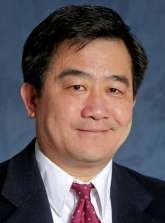
Prof. Alex K-Y. JEN
Professor Alex K-Y. Jen, a renowned scientist and eminent leader, joined City University of Hong Kong as Provost in December 2016. Professor Jen received his bachelor’s degree from the National Tsing Hua University in Taiwan and PhD from the University of Pennsylvania in USA. He was the Boeing-Johnson Chair Professor and Chair of the Department of Materials Science & Engineering at the University of Washington, Seattle. He also served as Chief Scientist for the Clean Energy Institute endowed by the Washington State Governor. Professor Jen is a distinguished researcher with a well-cited publication record. He has co-authored >830 papers, given over 550 invited talks, has >57,000 citations and an H-index of 120, and is co-inventor for 62 patents and invention disclosures. His interdisciplinary research is focused on organic/hybrid functional materials and devices for photonics, energy, sensors, and nanomedicine. He was named by the Times Higher Education as one of the top 10 researchers in the world working on perovskite solar cells in 2018 and has also been named by Thomson Reuters as one of the “Highly Cited Researchers” from 2014 to 2019 and as one of the “World’s Most Influential Scientific Minds” in 2015 and 2016 in the area of materials science. Professor Jen was elected as a Foreign Fellow of the European Academy of Sciences, as a Fellow by several professional societies including AAAS, MRS, ACS, PMSE, OSA, SPIE, and as an Academician by the Washington State Academy of Sciences.
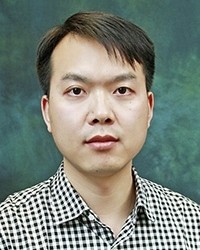
Dr. Dangyuan Lei
Dr. Dangyuan Lei is currently an Associate Professor at the Department of Materials Science and Engineering in CityU. He received his BSc, MPhil and PhD degrees all in Physics from Northwest University, Chinese University of Hong Kong and Imperial College London in 2005, 2007 and 2011, respectively. His research interest centers on nanophotonics and optical spectroscopy, with particular interest in plasmon-enhanced light-matter interaction at the nanoscale and its applications in energy harvesting, biosensing and bioimaging. He has co-authored 120 papers, given 70 invited talks, and received 4050 citations and an H-index of 40. Two of his publications have been respectively selected into the RSC “Emerging Investigators” themed issue of Journal of Materials Chemistry C (2016) and the IOP “Emerging Leaders” edition of Journal of Optics (2018). He has received several prestigious awards, including the Deputy Rector’s Award (2008-2011) and the Anne Thorne PhD Thesis Prize (2012) both from Imperial College London, the Early Career Grants Award from Hong Kong Research Grants Council (2013), the Municipal Science and Technology Project Award from Shenzhen Science and Technology Innovation (2013 & 2014), a Royal Society International Exchange award (2016), a Key Technology Partner Visiting Fellow of University of Technology Sydney (2017), and a Distinguished Visitor Award from the Scottish University Physics Alliance (2019).
--------------------------------------------------------------------------------------------------
Special Issue on the 100th Anniversary of Nankai University
Release Date: 23 September 2019
Submission deadline: 7th Jun,2020
Illustrations: This special issue is to congratulate on the 100th Anniversary of Nankai University (17th October 2019). It seeks to highlight the most exciting research works performed recently in Nankai University, from all aspects of optics and photonics, including basic, applied and engineering research and applications.
Brief introduction of Nankai University: Located in Tianjin, China on the border of the sea of Bohai, Nankai University dates back to 1904 with Mr. Yan Xiu and Mr. Zhang Boling’s initiation of the concept of saving the nation through education. Founded in 1919, Nankai University is one of the most renowned and prominent universities. During the one century development , Nankai University has been following the motto of “Dedication to public interests, acquisition of all-round capability and aspiration for progress with each passing day”.
Nankai University is a key multidisciplinary “985” and “211” Project university directly under the jurisdiction of the Ministry of Education. It features a balance between the Humanities and the Sciences, a solid foundation and a combination of application and creativity. Nankai University has been establishing its discipline system in accordance with the needs of economic and social development as well as talents cultivations.
There are 6 first degree national key disciplines, 9 second degree national key disciplines, 2 national key cultivating disciplines, and 32 first degree Tianjin municipal key disciplines. Furthermore, there are 2 national key laboratories, 7 key laboratories of the Ministry of Education. The university will continue to carry forward the character of Nankai, develop its spirit, persist in giving top priority to cultivating the integrity of students, strengthen its quality, and develop towards the goal of building a world-leading university.
Guest editors:
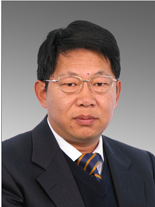
Prof. Jingjun Xu
Jingjun Xu, PhD, is a professor of physics at Nankai University. He is also the executive vice president of Nankai University and the founding director of the Key Laboratory of Weak-Light Nonlinear Photonics, Ministry of Education. He was awarded B.S. and Ph.D. in 1988 and 1993, respectively. Prof. Xu received the National Outstanding Youth Fund, Trans-Century Training Program Foundation, and was selected as a Changjiang Scholar. His awards include second class award of State Natural Science, first class provincial award of Natural Science, first class provincial award of Science and Technology Progress, Chinese Young Science and Technology Award, National Outstanding Scientific and Technical Workers, Chinese Young Scientist Award. Prof. Xu’s research interests include the nonlinear photonic materials, physics, and their applications for information technology.
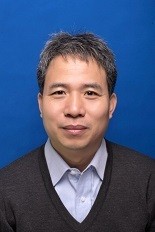
Prof. Guoquan Zhang
Professor Guoquan Zhang is the Dean of School of Physics, Nankai University. His main research fields include nonlinear optics, quantum optics, and nano-optoelectronics. He has published more than 150 peer-reviewed papers on Journals such as Phys. Rev. Lett., Adv. Mater., Opt. Lett., and Appl. Phys. Lett., 3 book chapters, and coedited as the chief editor two international conference proceedings. As the principle investigator, he undertook more than 10 research projects such as the 973 project and NSFC projects. Prof. Zhang is a Senior Member of Optical Society of America, he was selected to be the New Century Excellent Talents in University, Ministry of Education in 2004. And he has been awarded 4 science and technology prizes including a Second-Class National Natural Science Award.
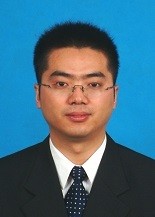
Prof. Weiwei Liu
Prof. Liu received his Ph. D degree in 2005, and jointed Nankai University in 2007 as a full professor. Now, he is serving as the director of Institute of modern optics, member of the standing committee of Chinese Optical Society and vice president of Optical Society of Tianjin. Based on his excellent achievement obtained during the past few years, Prof. Liu was awarded the ‘Wang Daheng’s Optics Prize for middle-aged and youth of the Chinese Optical Society’, Tianjin’s Outstanding Contribution Expert, first class provincial award of Natural Science, etc. Prof. Liu’s research interest mainly focuses on the ultrafast laser nonlinear optics and applications. He has already published more than 140 scientific papers in peer-reviewed journals. The total citation number of these publications is more than 4200 and the H-index reaches 34.
--------------------------------------------------------------------------------------------------
Special Issue on the 100th Anniversary of Harbin Institue of Technology
Release Date: 24 June 2019
Submission deadline: 7th June 2020
Illustrations: This special issue is to congratulate on the 100th Anniversary of Harbin Institute of Technology (7th June 2020). It seeks to highlight the most exciting research works performed recently in HIT, from all aspects of optics and photonics, including basic, applied and engineering research and applications.
Brief introduction of HIT: In 1920, Harbin Institute of Technology (HIT) was founded as one of China’s earliest and crucial technical university. Now HIT has developed into an open, multidisciplinary, research-oriented, leading national university with science and engineering as its core, meanwhile with diversity in management, liberal arts, economy and law. With the expansion of its influence, HIT has formed the pattern of ‘One University, Three Campuses: Harbin Campus, Weihai Campus and Shenzhen Campus’. According to US News 2017 and 2018, HIT is named as the World’s Top 10 Best Universities for Engineering in the past two years.
Abiding by its original style of schooling-Being strict in qualifications for graduates, making every endeavor in educating students-HIT has delivered numerous popular graduates to global employers. More than 200,000 graduates have stepped into society, making great achievements and creating wonders in all areas of society. They work as specialists in the fields of science and technology, education, and economics, enhancing the prosperity of China and the world. With ‘the Cradle of Engineers’ to ‘International First-rate Innovative Talents’ as its goal, HIT is now well on its way towards a world-class university.
Guest editors:
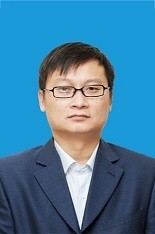
Prof. Jiecai Han
Jiecai Han, Executive Vice President of Harbin Institute of Technology. Professor of Materials Science. Academician of Chinese Academy of Sciences. He is the Executive Fellow of China Astronautical Society, Deputy Director of Chinese Society of Theoretical and Applied Mechanics and the co-editor of Composite Science and Technology, etc. He got the Fifth Chinese Young Science and Technology Award and he is the winner of the National Outstanding Youth Fund and the leading official of Innovative Research Group of the National Natural Science Foundation of China. His main research field includes fiber reinforced ceramic composite, carbon composite, infrared optical material, etc. He has undertaken many national key research projects such as the innovative group of The National Natural Science Fund of China. He got one second prize on National Natural Science, two national second prizes for Technological Invention and one national second prize for Scientific and Technological Progress. He had more than 350 articles published in international journals.

Prof. Jiubin Tan
Academician Jiubin Tan was born in 1955 and was admitted into HIT in 1977 and majored in precision instruments. He received his bachelor, master and doctor degrees. He has been doing engineering research of ultra-precision instruments. He advanced development of precision equipment such as strategic weapons, aircraft engines and high performance satellite cameras. His works significantly improved the performance of this kind of equipment and promoted the development of ultra-precision instruments in China. He has won the First prize for technical invention in 2006 and the Second prize (in 2013 and 2016). He was elected the member of CAE in 2017.

Prof. Yongkang Dong
Prof. Yongkang Dong was admitted into HIT in 1999 majored in Physical Electronics and received his bachelor and Ph.D. degree in 2003 and 2008, respectively. During 2008 to 2011, he was working as a Post-Doctoral Fellow in the Physics Department, University of Ottawa, Canada. In 2012, he re-joined HIT as a full professor. His current research interests involve nonlinear fiber optics and Brillouin scattering based optical fiber sensor and its applications in structural health monitoring. He has authored and coauthored more than 80 international journal papers. He is the recipient of the First Prize in Provincial Natural Science Award (2013), the Innovation Award of Chinese Society for Optical Engineering (2015), and the First Prize in Provincial Science and Technology Progress Award (2017). He is now the Chief Scientist of the National Key Scientific Instrument and Equipment Development Project of China.
--------------------------------------------------------------------------------------------------
LSA is invited to join the official Inauguration of International Day of Light
Release Date: 17 May 2018
UNESCO invited leading scientists on May 16, 2018 for the first edition of the International Day of Light to celebrate the role of light in our daily lives. Researchers and intellectuals discussed how light-based technologies can contribute to meet pressing challenges in diverse areas, such as medicine, education, agriculture and energy. UNESCO Director-General Audrey Azoulay opened this important event, with the participation of renowned scientists, including Kip Thorne, 2017 Nobel Prize in Physics, California Institute of Technology and Claude Cohen-Tannoudji, 1997 Nobel Prize in Physics, College of France. Over 500 attendees attended the event in Paris on May 16, 2018, and over 1,100 research institutions and universities are celebrating the International Day of Light. Executive Editor-in-Chief Tianhong Cui, Editor Tarik Bourouina and Chief Managing Editor Yuhong Bai of Light: Science & Applications was invited to attend the conference.

Group photo of LSA Executive Editor-in-Chief Tianhong Cui(first from right), LSA Editor Tarik Bourouina(second from left), LSA Chief Managing Editor Yuhong Bai(first from left)and Kip Thorne, 2017 Nobel Prize in Physics(second from right)
--------------------------------------------------------------------------------------------------
Special Topic: Quantum meta-nanostructures: from the fundamentals to emerging applications
Release Date: 6 September 2017
Deadline of manuscript submission: 28 February 2018
Submission note: please mark it is a special issue in "Manuscript Comment" field when submission in manuscript tracking system.
Quantum information is one of the most important research areas of modern physics and informatics. Light play a prominent role in quantum information science owing to the high speed of transmission, the tremendous bandwidth, and outstanding low-noise properties offered by photonic technologies. This has led to the realization of quantum photonic integrated circuits (QPICs) that offer a convenient and high-performance platform from which quantum technologies of a more complex architecture can be created. Quantum state preparation, manipulation, and measurement as well as several basic logic gates have already been demonstrated based on conventional dielectric waveguide technology.
Despite the rapid advances in the development of integrated quantum devices, many key components are still too bulky and power hungry. Plasmonics and high-index semiconductor nanostructure are bringing new opportunities to create much smaller, truly nanoscale functional quantum devices. This is possible as the structures possess a unique optical ability to shape optical fields and enhance light-matter interaction down to the atomic-scale. The availability of new 2D, 1D, and 0D solid state quantum materials with tailored electronic band structures are also opening up new ways to manipulate light, spin, and charge. In order to effectively use these nanoscale quantum architectures and unleash their true potential, it is of the utmost importance to provide stable and high quality interfaces to existing QPIC technology. The recent advent of flat optics based on metasurface concepts may provide a create solution to this challenge as they can seamlessly fuse these two seemingly incongruent worlds by offering connections at the speed of photonics, the size of electronics, and ease of fabrication of modern semiconductor device fabrication.
Co-editors:
Prof. Guangcan Guo,
Key laboratory of quantum information, CAS
University of science and technology of China, Hefei, Anhui, China
Email: gcguo@ustc.edu.cn
Prof. Cheng-Wei Qiu
Department of Electrical and Computer Engineering
National University of Singapore, Singapore 117583
Email: eleqc@nus.edu.sg
Prof. Xifeng Ren
Key laboratory of quantum information, CAS
University of science and technology of China, Hefei, Anhui, China
Email: renxf@ustc.edu.cn
Prof. Mark Brongersma
Department of Materials Science and Engineering, Stanford University
Deputy Director of Geballe Laboratory for Advanced Materials
476 Lomita Mall, Stanford, CA 94305-4045
Email: Brongersma@stanford.edu
--------------------------------------------------------------------------------------------------
Article in Light: Science & Applications highlighted by Nature Photonics
Release Date: 2 June 2017
A recent publication in Light: Science & Application has been discussed in a News & Views article in Nature Photonics (doi:10.1038/nphoton.2017.78). The work Wave propagation through disordered media without backscattering and intensity variations by Makris et al. published in Light: Science & Applications (2017) 6, e17035; doi:10.1038/lsa.2017.35, has been described as "A channel of perfect transmission". Patrick Sebbah argues that “the idea of compensating scattering by gain and loss is of strong practical interest”.
--------------------------------------------------------------------------------------------------
Special Issue: Twisted Light with Orbital Angular Momentum
Release Date: 13 April 2017
- Fundamental principles and properties of OAM-carrying or phase-structured light beams.
- Exotic light beams (Laguerre-Gaussian beams and Bessel beams with phase singularity, vector beams with polarization singularity, etc.).
- Generation, propagation, processing and detection of OAM-carrying twisted light beams.
- Spatial modes for free-space and fiber-based optical communications.
- Spatial modes for quantum information processing.
- Structured light for optical manipulation, optical/laser tweezers.
- Structured light for microscopy, astronomy, imaging, sensing.
- Structured electromagnetic waves outwith the visible spectrum (radio wave, microwave, terahertz wave, etc.) and their applications.
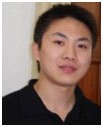 Jian Wang
Jian Wang
 Miles J. Padgett
Miles J. Padgett

--------------------------------------------------------------------------------------------------
LSA editor, Professor Chunlei Guo leads laser processing research at the new AIM Photonics
Release Date: 30 July 2015
--------------------------------------------------------------------------------------------------
Recent Article in LSA Highlighted by Media
Release Date: 21 July 2015
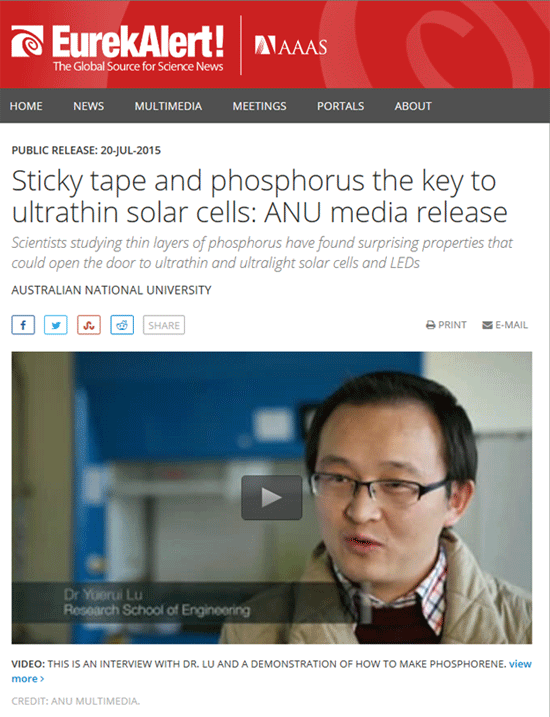
--------------------------------------------------------------------------------------------------
Author of Light: Science & Applications won the Nobel Prize in Physics 2014
Release Date: 8 October 2014
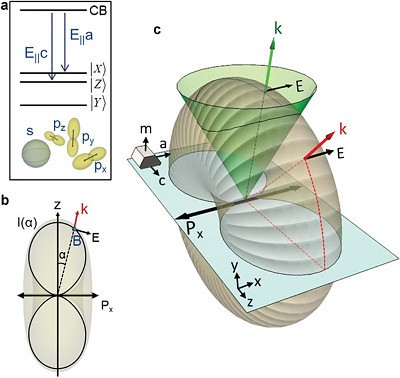 The authors designed a light-emitting diode (LED) that produces bright directional polarized blue light. The device is based on a variant of the semiconductor gallium nitride, grown on a specifically crystal direction that yields emission of polarized light. The researchers improved light extraction from the device by drilling aligned arrays of holes at precisely defined intervals into the substrate. This photonic crystal structure selectively enhances the emission of polarized light for particular emission angles by a factor of 1.8. High-brightness LEDs emitting polarized light are of interest for flat-screen displays, and also for household lighting because they minimize the glare from light reflections.
The authors designed a light-emitting diode (LED) that produces bright directional polarized blue light. The device is based on a variant of the semiconductor gallium nitride, grown on a specifically crystal direction that yields emission of polarized light. The researchers improved light extraction from the device by drilling aligned arrays of holes at precisely defined intervals into the substrate. This photonic crystal structure selectively enhances the emission of polarized light for particular emission angles by a factor of 1.8. High-brightness LEDs emitting polarized light are of interest for flat-screen displays, and also for household lighting because they minimize the glare from light reflections.
--------------------------------------------------------------------------------------------------
Light Conference: ICOME 2014 Explores Latest Research Progress
Release Date: 5 July 2014
--------------------------------------------------------------------------------------------------
Light: Science & Applications Editorial Board Meeting in Changchun
Release Date: 5 July 2014
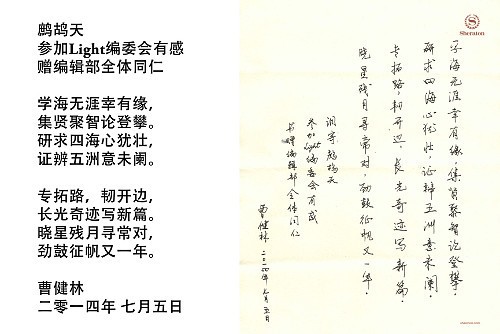 The meeting was attended by more than 70% of the Editorial board, including: Jianlin Cao (Editor-in-Chief of Light, Vice Minister of Science and Technology Ministry), Tianhong Cui (Executive Editor-in-Chief), Stefan Kaierle (Executive Editor-in-Chief), Qihuang Gong (member of Chinese Academy of Sciences), Lijun Wang (member of Chinese Academy of Sciences), Min Gu (Fellow of Australian Academy of Science and Australian Academy of Technological Sciences and Engineering), Lin Li (member of Royal Academy of Engineering), Byoungho Lee (member of Korean Academy of Sciences), Hongbo Sun (Jilin University), Mark I Stockman (Georgia State University), Chunlei Guo (University of Rochester), Xingde Li (Johns Hopkins University), Peter Herman (University of Toronto), Hervé Maillotte (CNRS), Hans Zappe (Freiburg University), Frank Chuang (UC Davis), etc.
The meeting was attended by more than 70% of the Editorial board, including: Jianlin Cao (Editor-in-Chief of Light, Vice Minister of Science and Technology Ministry), Tianhong Cui (Executive Editor-in-Chief), Stefan Kaierle (Executive Editor-in-Chief), Qihuang Gong (member of Chinese Academy of Sciences), Lijun Wang (member of Chinese Academy of Sciences), Min Gu (Fellow of Australian Academy of Science and Australian Academy of Technological Sciences and Engineering), Lin Li (member of Royal Academy of Engineering), Byoungho Lee (member of Korean Academy of Sciences), Hongbo Sun (Jilin University), Mark I Stockman (Georgia State University), Chunlei Guo (University of Rochester), Xingde Li (Johns Hopkins University), Peter Herman (University of Toronto), Hervé Maillotte (CNRS), Hans Zappe (Freiburg University), Frank Chuang (UC Davis), etc.
Light: Science & Applications ranks fourth in optics with first impact factor
Release Date: 30 July 2014
Light: Science & Applications, the open access journal from Springer Nature has today received its first impact factor of 8.476, coming fourth among 82 journals in optics, according to the 2013 Journal Citation Report published by Thomson Reuters, a category that is led by NPG's Nature Photonics. Read more about the news in Springer Nature Press release.
--------------------------------------------------------------------------------------------------
Web Focus: advanced photonic integrated circuits is now live
Release Date: 1 January 2013
Light: Science & Applications is proud to present a web focus on advanced photonic integrated circuits, which discusses the range of possible functionalities for these highly integrated optical chips, showing how fundamental work in areas such as transformation optics and materials technologies could lead to new applications for photonic integrated circuits.
Access the web focus today!
--------------------------------------------------------------------------------------------------
LSA Published Paper highlighted on the NFC Website
Release Date: 19 January 2013
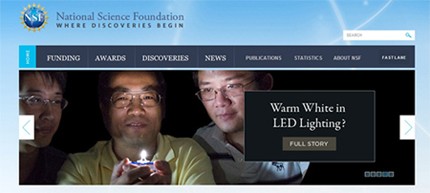
--------------------------------------------------------------------------------------------------
Prof. John Love accepted the invitation to be the topical editor of Light: Science & Applications
Release Date: 17 September 2012
Physics Teaching Centre
The Australian National University
Canberra
Australia
--------------------------------------------------------------------------------------------------
LSA Editorial Meeting Held Successfully at CIOMP
Release Date: 17 September 2012
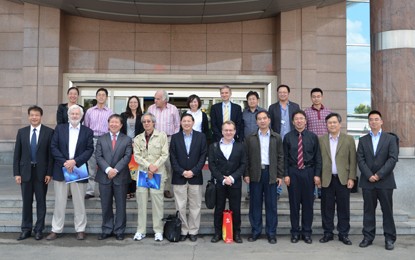
 The Editor-in-Chief Prof. Jianlin Cao addresses the meeting
The Editor-in-Chief Prof. Jianlin Cao addresses the meeting
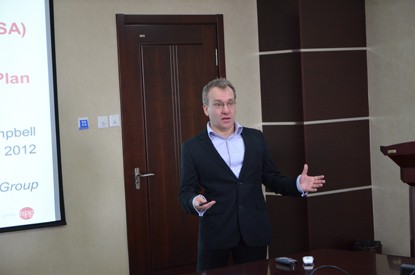
Executive Editor of Nature, Dr Nick Campbell gives a presentation
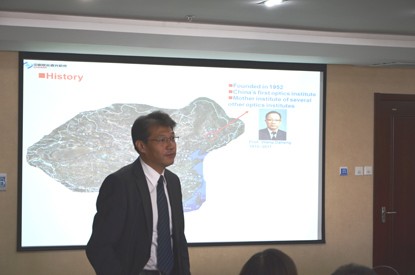 CIOMP Vice-President, Prof. Xuejun Zhang gives a presentation
CIOMP Vice-President, Prof. Xuejun Zhang gives a presentation
--------------------------------------------------------------------------------------------------
Announce the new journal: Light: Science & Applications
Release Date: 1 December 2011
From March 2012, NPG will publish the new online only, Light: Science & Applications, in partnership with the Changchun Institute of Optics, Fine Mechanics and Physics (CIOMP). This journal is fully open access with papers published online within a week of becoming available.
